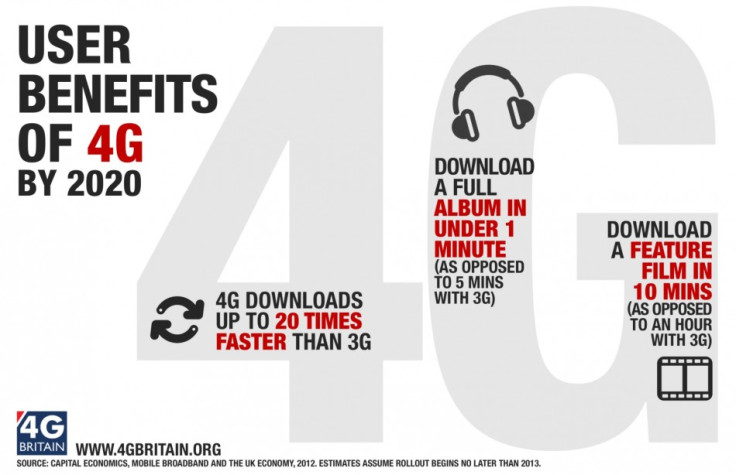What is 4G? - Everything You Need to Know
With Everything Everywhere having launched the UK's first 4G network, we take a look at what 4G actually is, and how it will benefit UK users.

The fourth generation of mobile internet, 4G will be fast enough to make browsing the web and downloading content like songs and films onto your mobile phone and tablet much quicker that it is now. Coverage in rural areas and indoors will also be improved.
How fast is 4G?
To be classed as 4G the network must be able to provide a download speed of up to 100Mbps, which is considerably faster than the current 3G networks that deliver 'up to' 7.2Mb speeds but on average fall much lower than that.
Offering up to 100Mbps could deliver an entire album of music in less than a minute or a feature-length film in just 10 minutes, compared to taking around an hour over 3G. However, 4GBritain.org has set itself a 2020 deadline to meet these speeds.

Isn't 4G already available in other countries?
Yes. America, South Korea and others have had 4G networks for some time now, but the '4G' name has been used for branding as much as a technical term, leading to some networks referring to their fastest 3G networks as 4G when, technically, they are not.
Adding to this mess, there's not just one 4G technology - there's Long Term Evolution (LTE) and WiMAX, with the newest versions of these technologies called LTE-Advanced and Mobile WiMAX Release 2 respectively.
Only these two technologies are recognised as 4G by the International Telecommunications Union, with everything before being classed as branding of '3.5G' services by mobile networks.
So can I buy a 4G device abroad and use it at home?
Yes and no. Different countries provide 4G on a variety of different frequencies, or spectrums. In the first quarter of 2013, Ofcom will start auctioning off the 800MHz and 2.6GHz spectrums for use by the UK's mobile networks.
Apple sells a 4G version of the iPad in the US now, but if you bought one it wouldn't work over here, because the frequency used by Everything Everywhere and the ones to be auctioned by Ofcom are different than the US networks (700MHz and 2100MHz).
However, go to Australia and purchase a 4G smartphone or tablet on the Telstra network and you'll be using it on the 1800MHz frequency, the same as the one to be used by EE (and now Three).
The lower frequency 800MHz band is part of the "digital dividend", which is ideal for widespread mobile coverage, while the high 2.6GHz frequency can offer more capacity, resulting in higher speeds.
This combination of high and low frequencies creates the potential for 4G to be widely available across the UK, while offering the higher capacity to cope with increased demand in urban areas.
But Everything Everywhere has jumped the gun
Everything Everywhere (EE) is the result of a merger between Orange and T-Mobile, and this company has been allowed by Ofcom to start providing 4G with the network going live on 30 October, 2012.
EE is upgrading its own 1800MHz spectrum for the 4G service, and while other networks have this spectrum too, they don't have enough of it to cover the majority of the UK, so they'll have to bide their time and wait for the Ofcom auctions.
This move has annoyed rival networks, with Vodafone saying: "The regulator has shown a careless disregard for the best interests of consumers, businesses and the wider economy through its refusal to properly regard the competitive distortion created by allowing one operator to run services before the ground has been laid for a fully competitive 4G market."
When will I be able to buy a 4G phone?
From 30 October, over 700 stores previously branded as T-Mobile, Orange or Everything Everywhere have been re-branded with EE livery and will be selling 4G handsets on two year contracts.
Everything Everywhere Brings 4G Mobile Internet to UK
Everything Everywhere To Launch New Brand Alongside Orange and T-Mobile
© Copyright IBTimes 2025. All rights reserved.






















